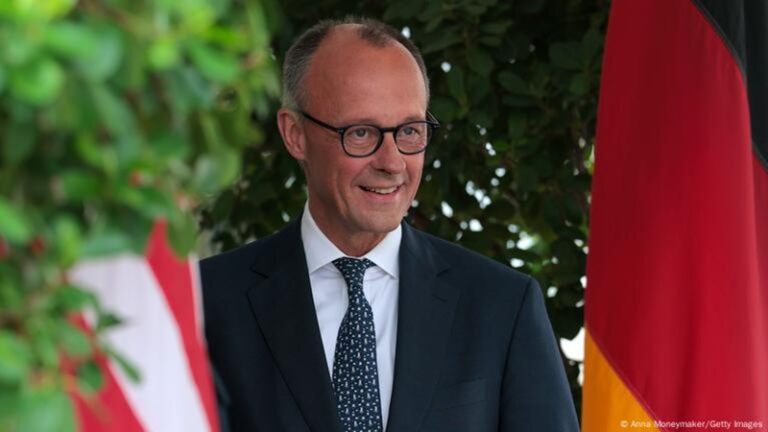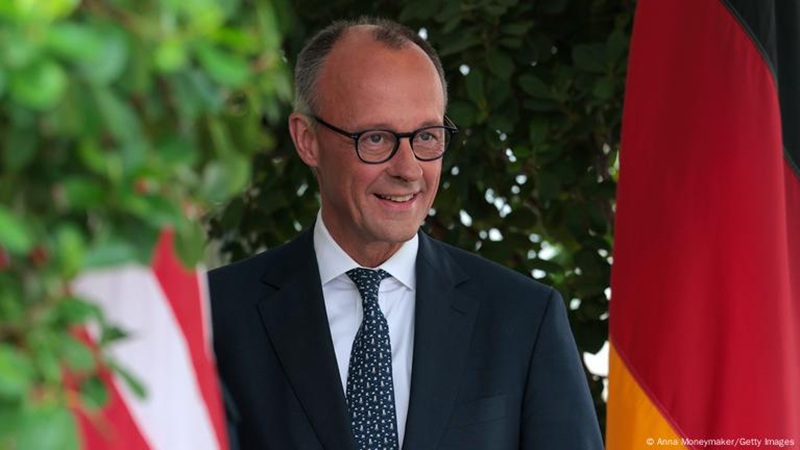
German engineering firms are facing a decline in orders, largely driven by tariff-related uncertainties, particularly with the United States. In June 2025, engineering orders dropped 5% year-over-year, with both domestic and foreign demand falling by the same percentage.
This was attributed to trade tensions, notably a 15% U.S. tariff on EU goods, which has created planning challenges for firms. The VDMA, a key engineering industry group, noted that while eurozone demand surged 16%, it was offset by a 13% drop from non-eurozone countries. Over the April-June quarter, orders fell 2%, primarily due to the U.S.-EU tariff dispute.
Firms like WIWA, which exports components to the U.S., are grappling with increased costs from a 20% tariff on European goods, forcing tough choices between absorbing costs or scaling back operations. The broader context shows Germany’s machinery exports to the U.S., worth €27.4 billion in 2024, are critical, with 60% of firms expecting significant impacts.
Register for Tekedia Mini-MBA edition 18 (Sep 15 – Dec 6, 2025) today for early bird discounts. Do annual for access to Blucera.com.
Tekedia AI in Business Masterclass opens registrations.
Join Tekedia Capital Syndicate and co-invest in great global startups.
Register for Tekedia AI Lab: From Technical Design to Deployment.
Some, like Deutz, plan to pass these costs to U.S. customers, potentially raising prices and risking market share. Meanwhile, EU countermeasures and negotiations aim to mitigate the damage, but clarity remains elusive, and fears of a deeper trade war loom.
The German auto market has experienced a rally in 2025, with the DAX index climbing 21% from its April 7 low, driven partly by a temporary 90-day pause on reciprocal U.S. tariffs announced on April 9, 2025. This relief led to significant gains in auto stocks, with Mercedes-Benz, Volkswagen, and BMW seeing nearly 20% surges, reversing earlier losses.
However, persistent tariff concerns pose significant implications for this rally and the broader German automotive industry, which accounts for 17% of Germany’s total exports and is a cornerstone of its export-oriented economy. The 25% U.S. tariffs on cars and auto parts, implemented in April 2025, significantly raise costs for German automakers, who exported €21.8 billion worth of vehicles to the U.S. in 2024.
These tariffs, applied to vehicles and parts from the EU, Mexico, and Canada, force companies like Volkswagen, BMW, and Mercedes-Benz to either absorb costs or pass them on to U.S. consumers, potentially increasing vehicle prices by $4,000 to $15,000 depending on the model. This could dampen U.S. demand, which is critical as 24% of Germany’s extra-EU automotive exports go to the U.S. Higher prices risk squeezing consumers out of the market.
German car exports to the U.S. dropped 13% in April and 25% in May 2025, with only 64,300 vehicles shipped over these months. This decline, driven by tariffs, threatens the sustainability of the market rally, as the U.S. is the second-largest export market for German automakers like Volkswagen (379,000 vehicles sold in 2024).
Production shifts to the U.S. are constrained by limited spare capacity—Volkswagen’s Chattanooga plant can only add 20,000 vehicles annually, and BMW and Mercedes face similar limits. Redirecting exports to other markets like China or the EU is challenging due to differing consumer preferences, logistical barriers, and rising competition, potentially leading to a 4% production drop in Germany.
The globalized nature of automotive supply chains exacerbates tariff impacts. German automakers rely on parts from Mexico, Canada, and the EU, and tariffs on components like engines and transmissions (e.g., BMW shipping engines from Germany to South Carolina) increase production costs. Smaller Tier 2 and Tier 3 suppliers may struggle to absorb these costs, risking insolvencies and further disrupting supply chains.
The DAX’s rally reflects optimism from the tariff pause, but ongoing uncertainty keeps markets volatile. After the initial tariff announcement, Volkswagen, BMW, and Mercedes stocks lost 6-8% in five days, and despite recent gains, shares fell over 3% after a July 2025 U.S.-EU trade agreement reduced tariffs to 15%. The German auto industry, already in crisis with Volkswagen closing factories and cutting jobs, faces further strain.
The Kiel Institute estimates a 4% production drop could exacerbate unemployment, while the IW predicts a €200 billion economic loss over four years, equivalent to a 1.5% GDP drop. Some automakers are exploring production shifts to the U.S., but building new plants takes years and faces labor shortages. Luxury brands like Porsche, heavily reliant on U.S. sales (40% of its market), may fare better due to customers’ willingness to absorb price hikes, but mass-market brands like Volkswagen face tougher choices.
Diversifying to markets like China is an option, but slow reaction times mean short-term losses are likely, potentially capping the rally’s momentum. The EU is considering countermeasures, including a 25% tariff on U.S. auto imports, which could hurt German firms like BMW and Mercedes that produce in the U.S. for export. A broader trade war, especially if Trump imposes threatened 30% tariffs on the EU, could segment global auto markets.
While the tariff pause has fueled a German auto market rally, the underlying tariff concerns create a fragile outlook. Higher costs, reduced exports, supply chain disruptions, and potential trade wars threaten to undermine gains, with economic losses and job cuts adding pressure.
Bürgergeld’s Comprehensive Coverage Far Exceeds Poland’s, But Cost-Cutting Pressures Could Push Germany Toward A Leaner Model
Meanwhile, German Economy Minister Katherina Reiche is pushing for reforms to the Bürgergeld, Germany’s basic income support scheme, due to rising costs. In 2024, the state paid €46.9 billion to 5.5 million recipients, up €4 billion from the previous year, partly due to inflation adjustments in 2023 and 2024.
Reiche, a member of the Christian Democrats (CDU), emphasizes that work must be more financially rewarding than staying unemployed, stating, “Those who go to work must feel that they have more in their pockets at the end of the day than those who do not.”
The governing coalition, including the Social Democrats (SPD), agrees on the need for reform. SPD’s Dirk Wiese supports stricter sanctions for system abuse and highlights the need for a higher minimum wage and better collective bargaining, noting many recipients work but still need income supplements. The coalition is also debating cuts of €1-2 billion to Bürgergeld and other benefits, with proposed sanctions for missing job center appointments.
Cutting €1-2 billion from Bürgergeld aims to ease fiscal pressure, as costs rose to €46.9 billion in 2024. This could free up funds for other priorities, like infrastructure or tax relief, but risks reducing support for vulnerable populations. Stricter sanctions and a focus on making work more financially rewarding than benefits aim to boost employment. However, if low-wage jobs remain unattractive, the reforms may not significantly reduce dependency, especially for the 40% of recipients who work but still require supplements.
Without addressing low wages or collective bargaining, as highlighted by SPD’s Dirk Wiese, reforms may fail to incentivize work. Raising the minimum wage could offset benefit cuts but risks increasing labor costs for businesses, potentially impacting small enterprises. Critics like SPD’s Dagmar Schmidt argue that cuts could exacerbate poverty, especially for those unable to find stable, well-paying jobs. Reduced benefits may strain low-income households, particularly amid rising living costs.
Stricter sanctions for missing job center appointments could alienate recipients, fostering perceptions of unfairness if job opportunities or training programs are inadequate. This risks social unrest or distrust in institutions. Without investment in upskilling, reforms may push recipients into low-skill, low-pay jobs, limiting long-term economic mobility.
The CDU-SPD coalition shows agreement on reform needs but differs on execution. The SPD’s push for higher wages and collective bargaining contrasts with CDU’s focus on cost-cutting, potentially straining coalition dynamics. Reforms could boost support among voters prioritizing fiscal discipline but alienate those who view Bürgergeld as a social safety net. Opposition parties may capitalize on public discontent if cuts are seen as punitive.
With Germany’s economic challenges, including stagnant growth, reforms perceived as unfair could fuel support for populist parties like AfD, especially if unemployment rises. Nordic countries combine generous welfare benefits with active labor market policies (ALMPs). Denmark’s “flexicurity” model offers high unemployment benefits (up to 90% of previous income for two years) but requires job training and active job-seeking. –
Strong emphasis on upskilling, job placement, and flexibility for employers to hire/fire, balanced by robust social safety nets. Denmark’s success in low unemployment (4.8% in 2024) suggests Germany could pair Bürgergeld cuts with increased investment in training and job placement. However, Nordic models require high taxes, which may face resistance in Germany’s current fiscal climate.
Bürgergeld’s flat-rate payments (€563/month for a single person in 2024) are less generous than Denmark’s income-based benefits, but Germany’s proposed sanctions mirror Nordic enforcement of job-seeking rules. Welfare systems in Spain and Italy are less comprehensive, with lower coverage and benefits. Spain’s Minimum Vital Income supports 700,000 household (2024), far fewer than Bürgergeld’s 5.5 million recipients.
Italy’s Reddito di Cittadinanza was scaled back in 2023 due to costs and fraud concerns. Means-tested benefits with regional variations, often criticized for bureaucratic inefficiencies and limited job integration programs. Italy’s experience with scaling back benefits highlights risks of social backlash and limited impact on employment if job creation lags. Germany could avoid this by ensuring reforms include robust job support, unlike Spain’s underfunded ALMPs.
Bürgergeld’s broader coverage and centralized administration are more efficient than Southern Europe’s fragmented systems, but Germany risks similar criticism if cuts disproportionately affect vulnerable groups. The UK’s Universal Credit integrates multiple benefits, serving 6.7 million people in 2024. Payments are modest (£368/month for a single person over 25), with strict conditionality (e.g., 35-hour weekly job search requirements).
Emphasis on reducing dependency through sanctions and in-work benefits, but criticized for increasing poverty due to low payment levels. The UK’s focus on in-work benefits aligns with Reiche’s goal of making work pay, but Universal Credit’s punitive sanctions have led to destitution for some. Germany could adopt tapered benefit reductions to ease transitions to work without harsh penalties.
Bürgergeld’s higher payment levels and focus on dignity contrast with Universal Credit’s austerity-driven approach, but proposed sanctions risk converging toward the UK’s stricter model. Poland’s welfare system is minimal, with unemployment benefits covering only 15% of the unemployed (2024), lasting 6-12 months at low rates (€350/month initially). Social assistance focuses on family benefits.
Low spending (0.5% of GDP vs. Germany’s 1.3%) and reliance on economic growth to reduce poverty, with limited ALMPs. Poland’s lean system keeps costs down but leaves gaps in coverage, unsuitable for Germany’s larger, more diverse population. Germany’s reforms should avoid Eastern Europe’s underinvestment in social support to maintain social stability.
Like this:
Like Loading…


